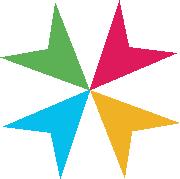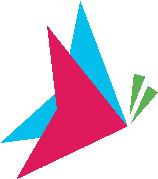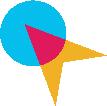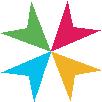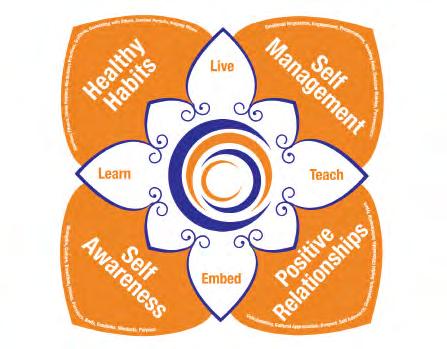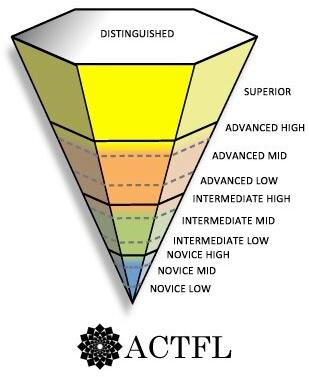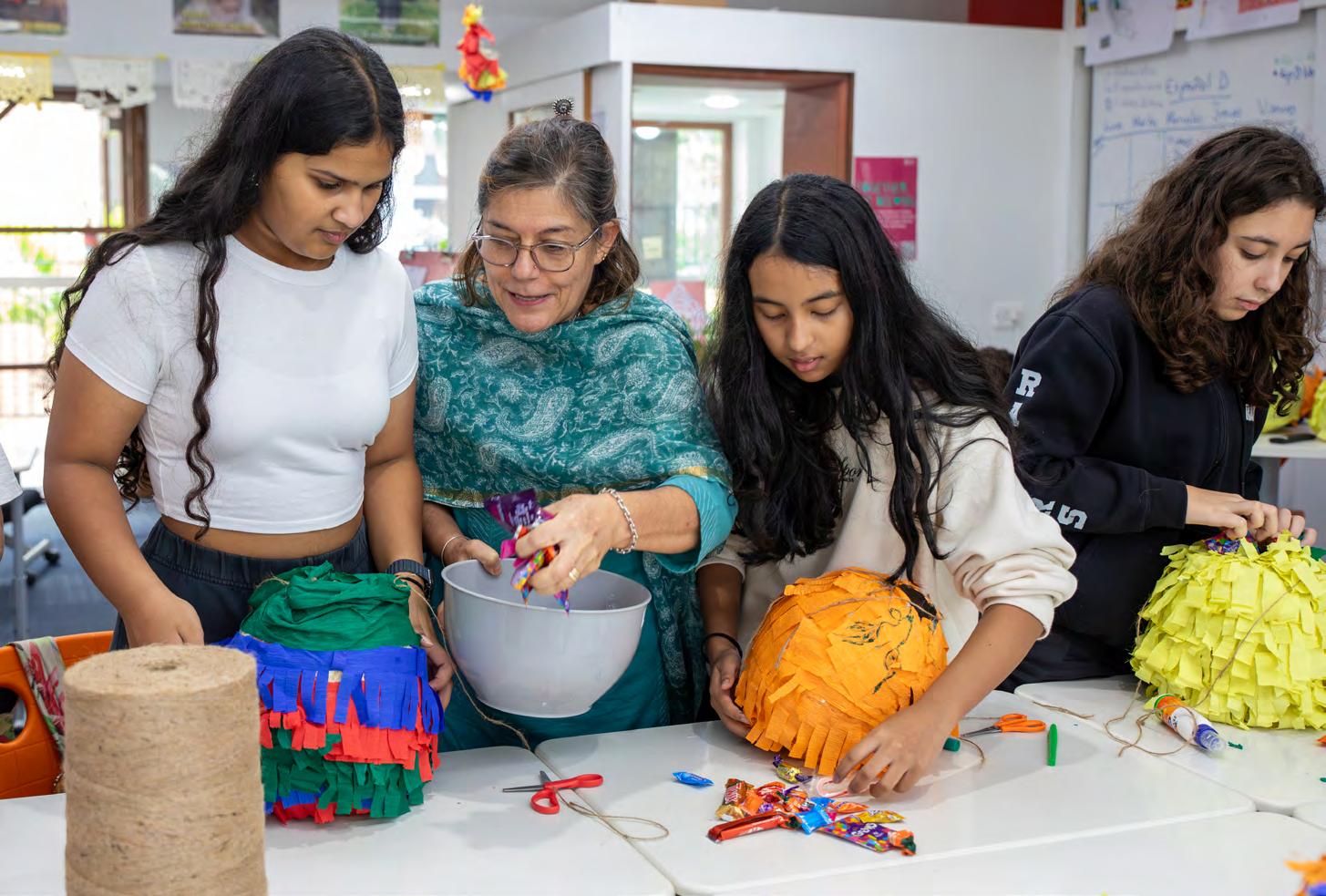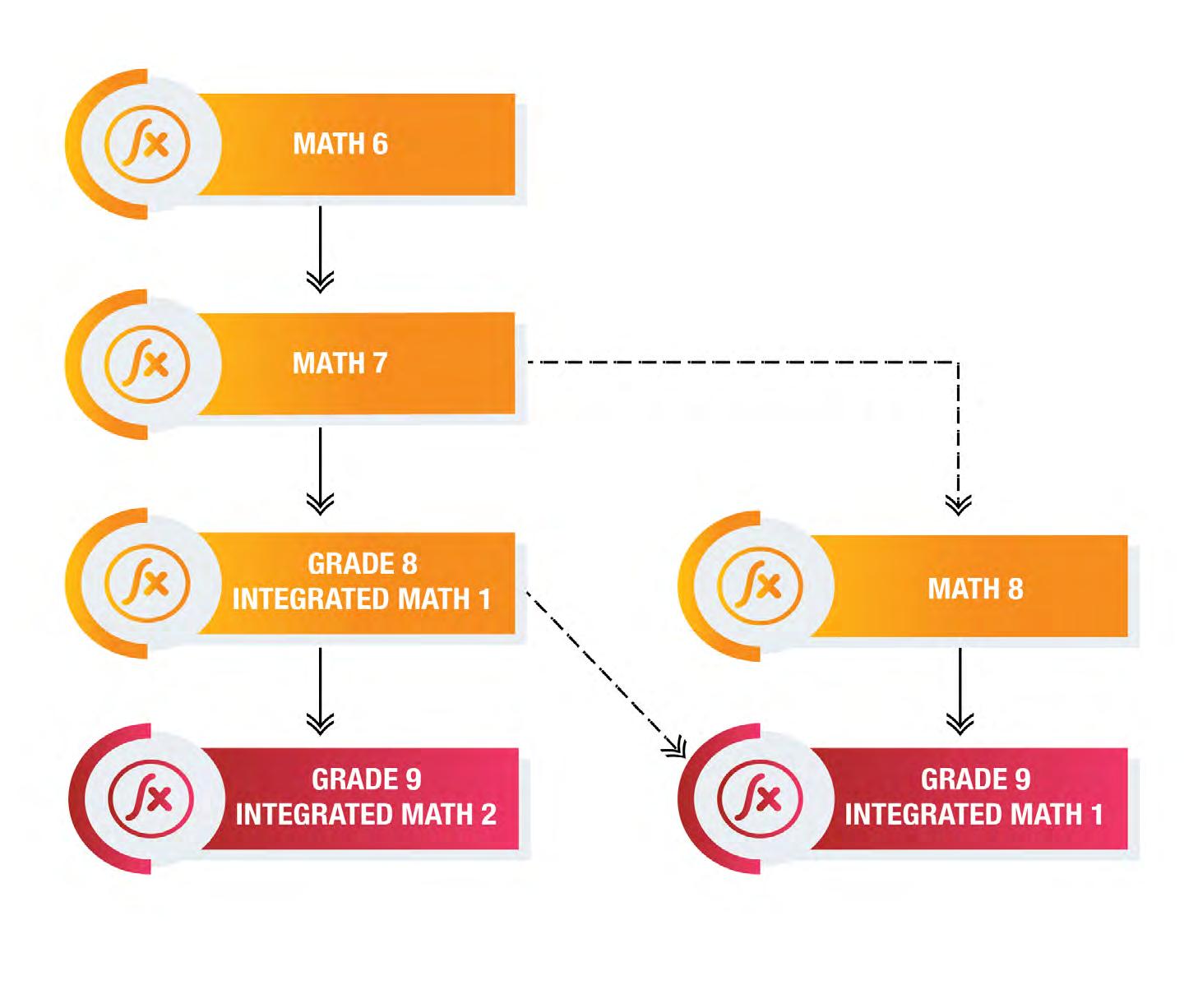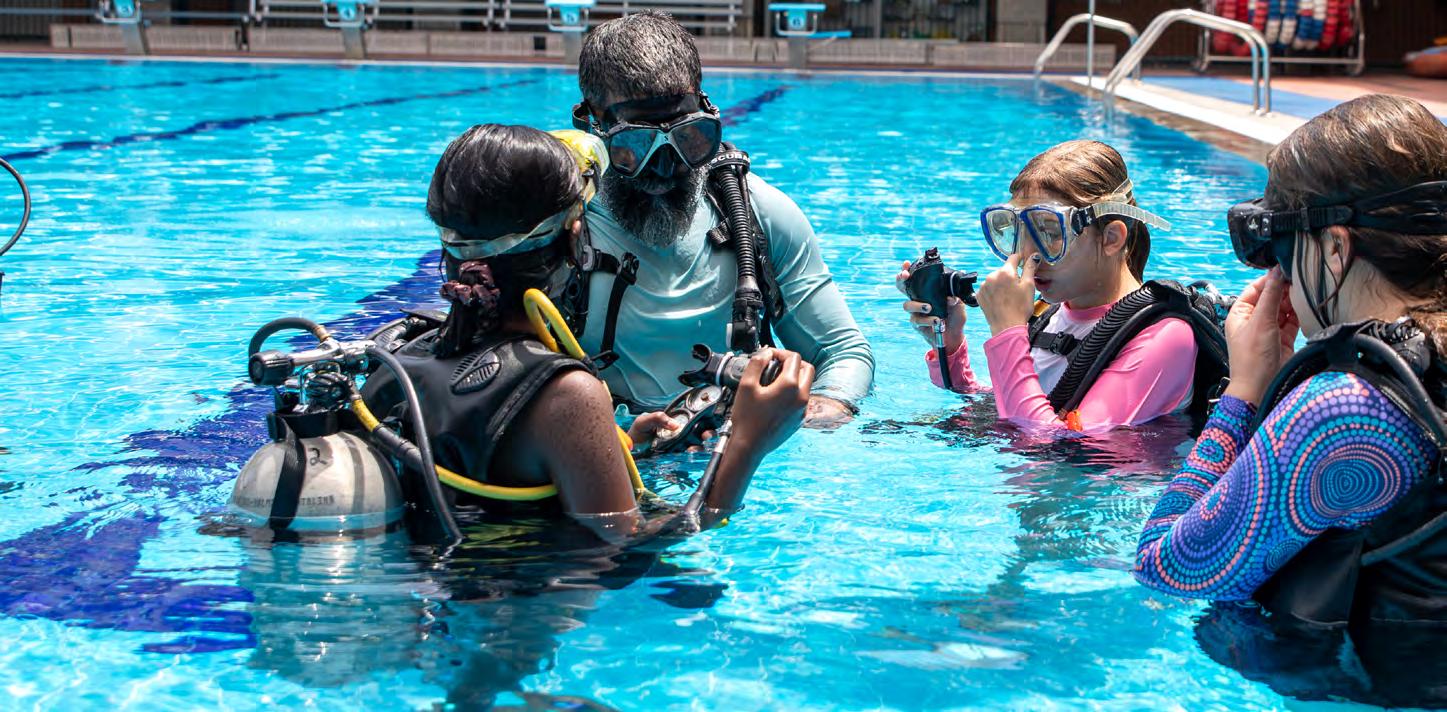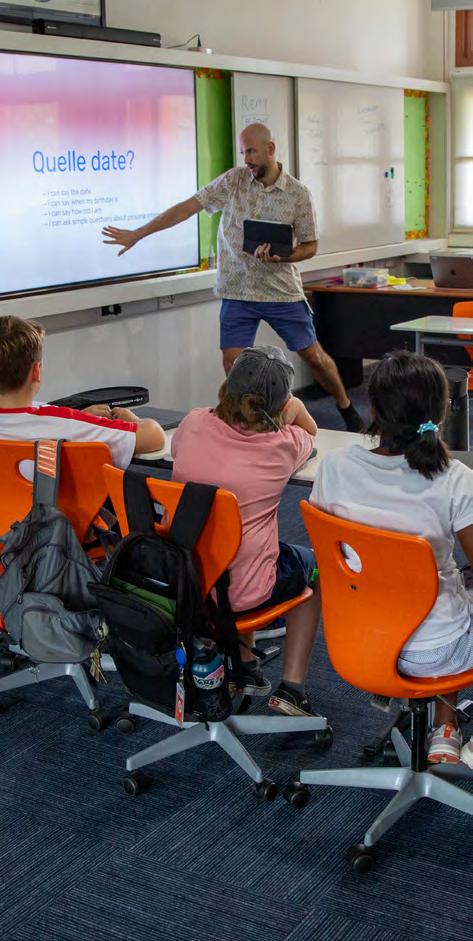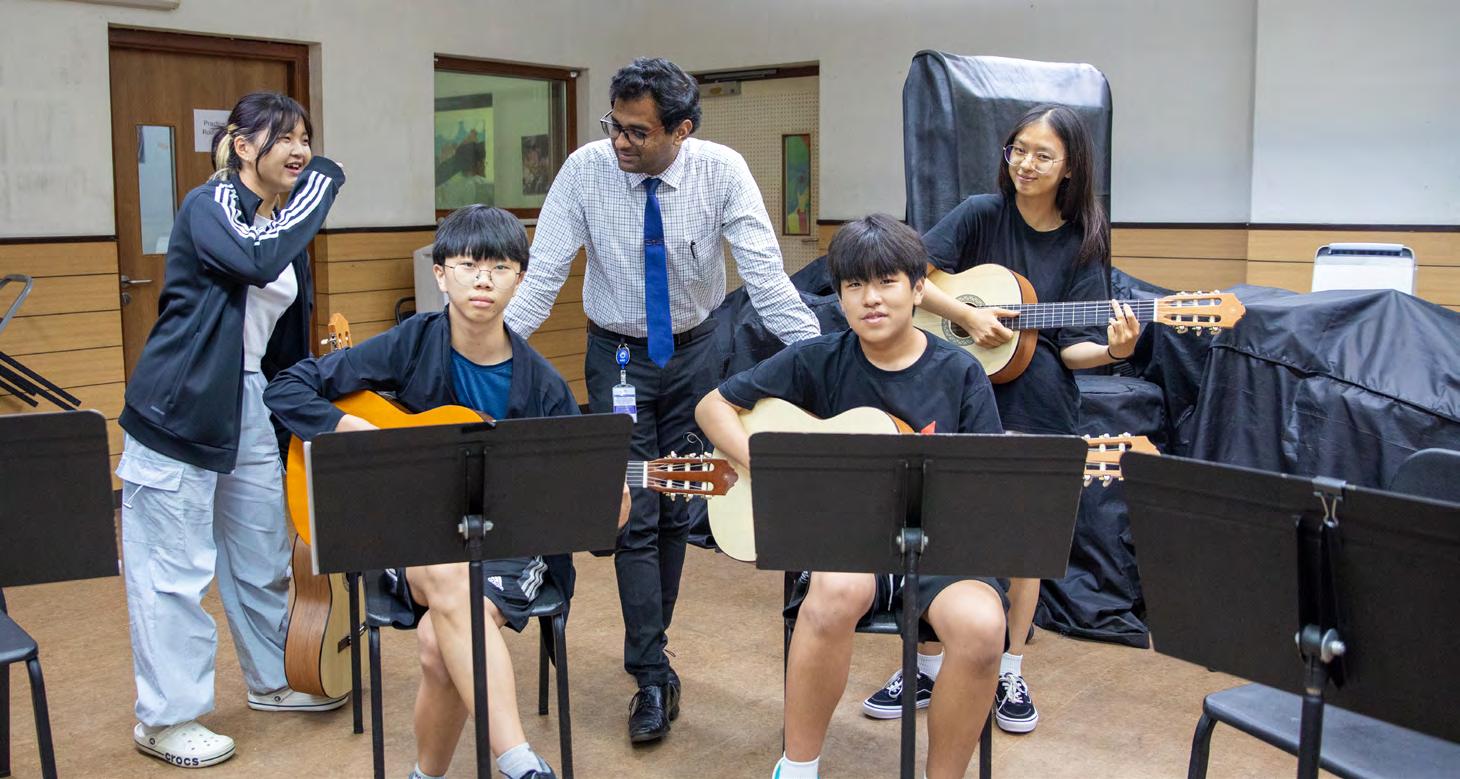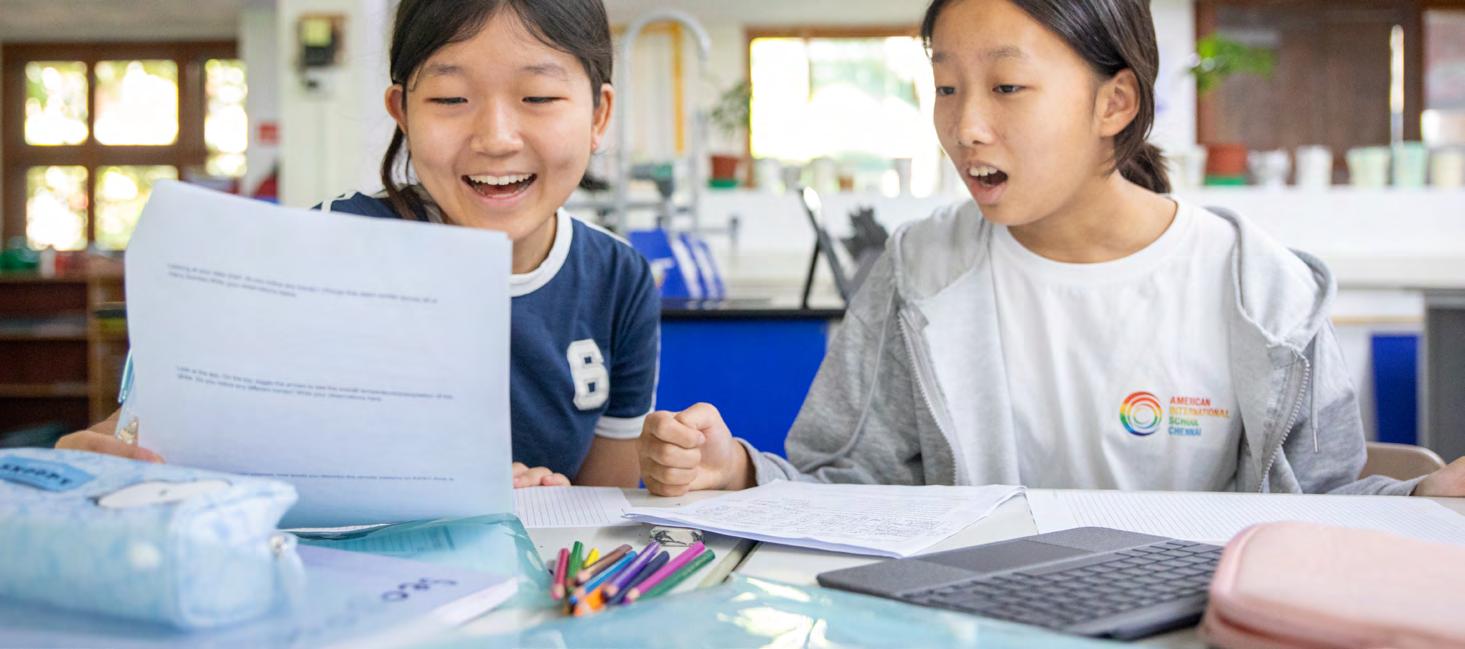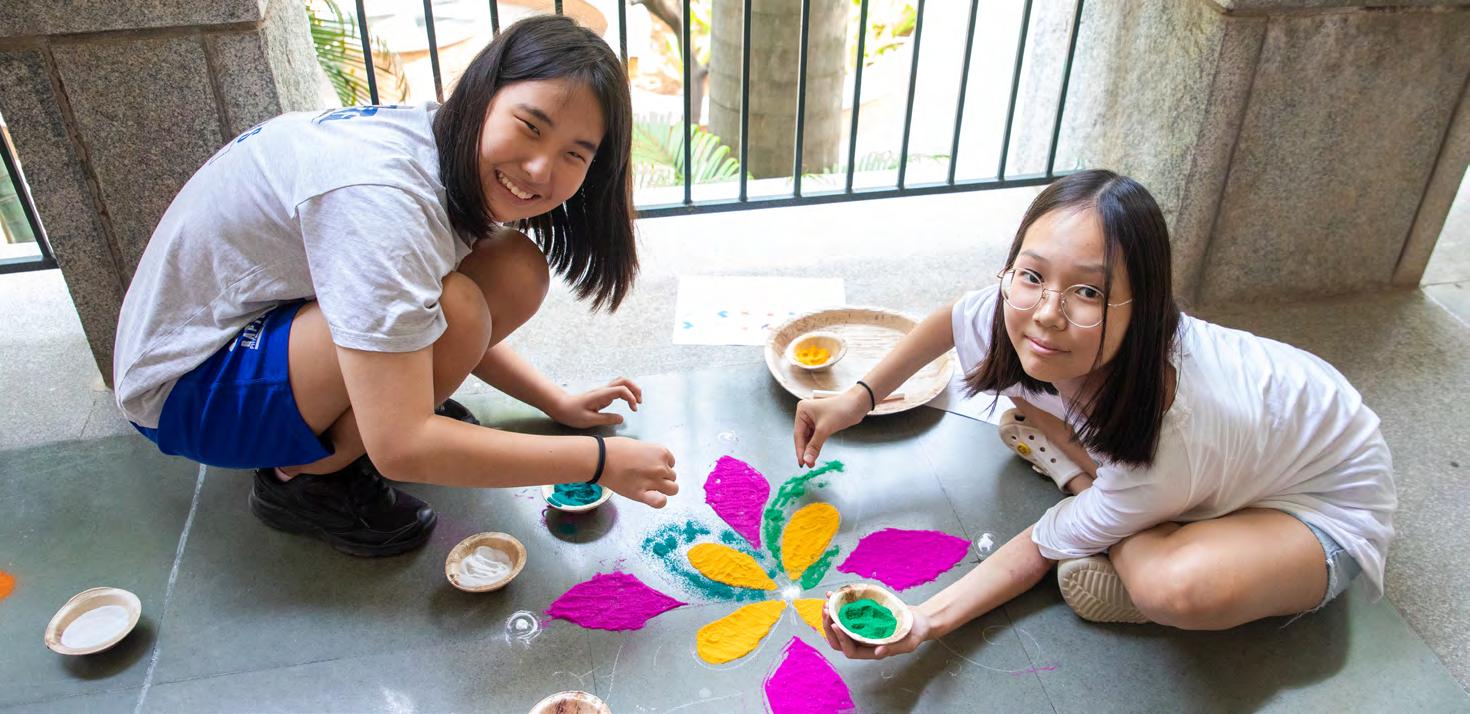AISC Language Philosophy
MS Learning Framework and Course Guide 2025 - 2026 oC m m uni t y
Teachers instruct & assess in English.
membersinteract with each
Students use any resource, linguistic or otherwise, to be successful.
l a n gau eg .
otherusingacommon
KOREAN
FRENCH
Philosophie linguistique de l’AISC
. Les enseignants enseignent et évaluent en anglais.
seL mem b r e s d e l a communautéinteragissent les uns aveclesautresaumoyen
Les apprenants sont libres du choix des ressources, linguistiques ou autres, pour réussir.
ABOUT THE CURRICULUM GUIDE
The information contained in this Curriculum Guide is designed to help students and parents understand our academic program and provide an overview of the Middle School learning community. In this Curriculum Guide, you will find descriptions for each course offered. Over the span of three years, students will take a variety of required and elective classes. Middle School is a time for students to take advantage of a wide range of opportunities and discover areas of passion and interest. Overviews of our Advisory Program, Learning Support Services (LSS), and English as an Additional Language (EAL) program are also provided, along with details about experiential learning, library services and technology integration.
ACADEMIC PROGRAM & SAMPLE SCHEDULE
Students in Grades 6–8 take math, science, language arts, social studies, physical education, and world language or English for Academic Purposes (EAP) courses each year. Students choose at least two elective classes each year from the following areas: Performing Arts, Visual Arts, and Information Design Technology.
Sample Middle School Student Schedule
MIDDLE SCHOOL ADVISORY
The Middle School Advisory Program is a dedicated time that provides a comprehensive framework for supporting the holistic development of students, nurturing their social, emotional, and academic growth in a supportive and inclusive environment. By fostering connections, promoting self-awareness, and instilling healthy habits, the program equips students with the tools they need to thrive both inside and outside the classroom.
Advisors play a pivotal role in the Advisory program by serving as mentors and advocates for their students. They provide individualized support, guidance, and encouragement, helping students navigate academics, health and wellbeing, and social relationships. Advisors also facilitate communication between students, teachers, and parents to ensure a holistic approach to student support.
Advisory is one way in which we explore components of the AISC Wellbeing Framework. We nurture wellbeing in Advisory by:
• Fostering positive relationships through communication, perspective taking, understanding, and play;
• Building self-awareness through reflection on strengths, growth areas, emotion identification, identity, values and culture, and life transitions;
• Giving students opportunities to practice self-management through awareness, goal-setting, management of time, priorities and emotions, engagement and help-seeking; and
• Providing opportunities to build healthy habits like maintaining balance, making healthy choices about sleep, activities, digital use, as well as, making connections with others, and gratitude.
Digital Citizenship in Advisory and Beyond
AISC uses the Digital Literacy and Citizenship Curriculum from Common Sense Education to empower students to think critically, behave safely, and participate responsibly in our digital world. These digital-age skills are essential for students to harness the full potential of technology for learning.
Areas of Focus Include:
• Media Balance & Wellbeing
• Privacy and Security: The Digital Citizenship
• Digital Footprint & Identity
• Cyberbullying, Digital Drama, and Hate Speech
• Relationships & Communication
We believe that taking this time during the school day to work together to build skills and relationships is particularly important for adolescents and their wellbeing as they progress through Middle School.
COURSE DESCRIPTIONS
ENGLISH LANGUAGE ARTS
AISC Early Years - Grade 12 Disciplinary Transfer Goals for English Language Arts
Students will be able to independently use their learning to…
• Actively listen to understand how language can be used to connect to and understand the perspectives of others;
• Develop and nurture a habit of reading, writing, speaking and listening for personal enjoyment and critical discourse;
• Engage in purposeful writing to flexibly move through the writing process;
• Use clear and specific language to express ideas, respond to others, and refine their own perspectives with confidence; and
• Engage in collaborative discussions appropriate to task, audience and purpose with diverse partners to express, develop and refine thinking.
The English Language Arts Department at AISC is dedicated to providing a program that emphasizes inquiry, creativity, reflection, and analysis. The Common Core English Language Arts Standards are the foundation of our curriculum.
Middle School Language Arts classes allow students to become compassionate global citizens with the courage and creativity to express themselves with confidence. The curriculum is grounded in the Common Core Standards for English Language Arts, which encompasses five core components: reading, writing, listening, speaking, and language usage. The workshop model supports student choice, agency, collaboration. We are committed to providing an enriching and challenging language arts program that is differentiated and dynamic.
Language Arts 6
In Grade 6 Language Arts, students embark on a comprehensive exploration of reading, writing, speaking, and listening skills. They will delve into complex texts, enhancing their ability to cite textual evidence, understand central themes, and analyze characters, settings, and plots. Students will engage with a variety of genres and formats, developing critical thinking and comprehension skills.
Writing takes a central role, with students crafting narratives that develop real or imagined experiences, informative/explanatory texts that convey ideas clearly, and arguments supported by reasons and evidence. The emphasis on research and presentation skills fosters the ability to conduct research and communicate knowledge and ideas effectively. The development of language skills including grammar, punctuation, and vocabulary is integral to their learning journey.
Language Arts 7
Grade 7 Language Arts continues to build on the Common Core Standards, focusing on the refinement and expansion of reading and writing abilities. Students will engage deeply with literature and informational texts, aiming for an advanced understanding of themes, arguments, and the integration of multimedia elements. They are encouraged to interpret, infer, and question as they analyze texts. Units will challenge students to articulate clear arguments, provide detailed narratives, and produce comprehensive informational texts. Emphasis is placed on precise language, coherent organization, and the use of varied techniques to enhance arguments and narratives. Students will also undertake research projects, developing their ability to gather, synthesize, and present information while continuing to hone their grammar, vocabulary, and language conventions.
Language Arts 8
Grade 8 Language Arts is designed to further advance students’ mastery of the Common Core Standards. At this level, students engage in sophisticated analyses of literary and informational texts, evaluating arguments, assessing the structure of texts, and understanding the impact of specific word choices on meaning and tone. The development of critical thinking and analytical skills is paramount. Students develop their ability to evaluate the author’s craft by noticing word choice, structure, and point of view. Students practice speaking and listening strategies for academic conversation about shared texts, sharing and deepening their understanding of universal themes. Students will refine their writing across genres with a focus on crafting logical arguments, detailed and reflective narratives, and informative texts that make complex ideas accessible. They will learn to use evidence effectively, structure their writing for impact, and employ language and techniques to engage their audience. Research becomes more complex, requiring careful evaluation of sources and integration of diverse types of information. Language skills, including
vocabulary acquisition and grammar proficiency, are emphasized to support all areas of learning.
WORLD LANGUAGE
AISC 3-12 Disciplinary Transfer Goals for World Language
Students will be able to independently use their learning to…
• Present information, concepts, and ideas on a variety of topics to various audiences of listeners or readers;
• Understand, interpret, and analyze what is heard or read on a variety of topics;
• Interact and negotiate meaning in spoken or written conversations to share information, reactions, feelings, and opinions; and
• Communicate effectively while demonstrating cultural understanding. The goal of the AISC World Language Department is to empower students to become versatile, empathetic collaborators who will be proficient communicators in more than one language. The AISC World Language Department is guided by the American Council on the Teaching of Foreign Languages (ACTFL) Standards. The program cultivates effective use of the target language by providing students with an immersive classroom environment and authentic materials. Language learning throughout the program occurs through meaningful, contextually based interactions. Moreover, teachers encourage students to connect to other cultures and value international-mindedness. The AISC World Language Department believes that both language educators and their students should use the target language to communicate in the classroom, ideally 90% of the time at all levels of language courses.
MS Learning Framework and Course Guide
TABLE OF ACTFL LEVELS
Novice Mid: I can communicate on very familiar topics using a variety of words and phrases that I have practiced and memorized. Novice High: I can communicate and exchange information about familiar topics using phrases and simple sentences. I can usually handle short social interactions by asking and answering simple questions.
French A / Spanish A
French A / Spanish A
Pathway A is an introductory language course that develops students’ basic communication skills in all three modalities: Interpretive Communication, Interpersonal Communication, and Presentational Communication. Speaking, listening, reading, and writing skills are developed through activities such as roleplays, interviews, projects, and presentations. Spanish/French is the language of instruction and communication in this class. Meeting the learning standards is based on achieving a Novice Mid-level of proficiency in Interpersonal Speaking and Interpretive Listening modes. This course is offered to students with limited or no previous exposure to the language.
Pathway A is an introductory language course that develops students’ basic communication skills in all three modalities: Interpretive Communication, Interpersonal Communication, Presentational Communication Speaking, listening, reading and writing skills are developed through activities such as role-plays, interviews, projects, and presentations Spanish/French is the language of instruction and communication in this class Meeting the learning standards is based on achieving a Novice-Mid level of proficiency in Interpersonal Speaking and Interpretive Listening modes This course is offered to students with limited or no previous exposure to the language
French B / Spanish B
Pathway B continues to develop students’ basic communication skills in all three modalities: Interpretive Communication, Interpersonal Communication, Presentational Communication Speaking, listening, reading and writing skills are developed through activities such as role-plays, interviews, projects, and presentations Spanish/French is the language of instruction and communication in this class Meeting the learning standards is based on achieving a Novice-Mid level of proficiency in Interpersonal Speaking, Interpretive Listening, and Presentational Speaking modes This course is offered to beginning students who have successfully completed Pathway A (or with equivalent experience with the language as determined by a teacher evaluation of proficiency)
French B / Spanish B
Pathway B continues to develop students’ basic communication skills in all three modalities: Interpretive Communication, Interpersonal Communication, and Presentational Communication. Speaking, listening, reading, and writing skills are developed through activities such as roleplays, interviews, projects, and presentations. Spanish/French is the language of instruction and communication in this class. Meeting the learning standards is based on achieving a Novice Mid-level of proficiency in Interpersonal Speaking, Interpretive Listening, and Presentational Speaking modes. This course is offered to beginning students who have successfully completed Pathway A (or with equivalent experience with the language as determined by a teacher evaluation of proficiency or students exiting Grade 5 at AISC with two years of elementary world language).
French C / Spanish C
Pathway C continues to develop students’ communication skills in all three modalities: Interpretive Communication, Interpersonal Communication, and Presentational Communication. Speaking, listening, reading and writing skills are developed through activities such as vocabulary games, sentence creation, comprehension activities, roleplays, interviews, projects, and presentations. Spanish/French is the language of instruction and communication in this class. Meeting the learning standards is based on achieving a Novice High-level of proficiency in Interpersonal Speaking, Interpretive Listening, and Presentational Speaking modes, as well as achieving a Novice Mid-level of proficiency in Interpersonal Writing, Interpretive Reading, and Presentational Writing modes. This course is offered to students who have successfully completed Pathway B (or with equivalent experience with the language as determined by a teacher evaluation of proficiency).
French D / Spanish D
Pathway D continues to develop students’ communication skills in all three modalities: Interpretive Communication, Interpersonal Communication, and Presentational Communication. Speaking, listening, reading, and writing skills are developed through activities such as paragraph building, comprehension activities, roleplays, interviews, projects, and presentations. Spanish/French is the language of instruction and communication in this class. Meeting the learning standards is based on achieving a Novice High-level of proficiency in Interpersonal Speaking and Writing, Interpretive Listening and Reading, and
Presentational Speaking and Writing modes. This course is offered to students who have successfully completed Pathway C (or with equivalent experience with the language as determined by a teacher evaluation of proficiency).
*Students intending to pursue the International Baccalaureate (IB) Language B course for the IB Diploma Programme in High School, will be required to place into High School World Language Level 2 in order to be on the appropriate pathway.
SOCIAL STUDIES
AISC EY-12 Disciplinary Transfer Goals for Social Studies
Students will be able to independently use their learning to…
• Develop relevant questions that frame and advance an inquiry connected to the social sciences;
• Gather, evaluate, and analyze sources to develop and support claims;
• Identify and analyze local, regional, and global issues in order to be capable of taking informed action that is meaningful to self and society;
• Apply disciplinary understanding to draw conclusions about the past, present and plan for the future; and
• Critically examine diverse contexts, perspectives, and cultures to be internationally minded.
The Social Studies Department at AISC is committed to providing a program that will encourage reflective and analytical thinking and de-emphasize rote learning. It is our intent that students learn how to make their own interpretations, so that by the time they leave school they are able to think and learn independently and are aware of their responsibilities as global citizens.
Social Studies 6
In Grade 6, students focus on the concept of social connectedness. Through examining the different disciplinary fields of social studies, students are able to identify and analyze the unique contributions of each social science. Inquiry and design projects drive student explorations as they ponder the idea of what makes us human and engage with the challenges that come from living in a highly connected world. Through inquiry, students develop their questioning, research, and communication skills. Students learn about the relationship between managing resources and population growth by investigating how ancient civilizations came to prominence and what led to their successes and failures. The year culminates with an exploration into the costs and benefits of globalization. Students continue their exploration of social connectedness by developing solutions to helping our planet, and the people who live on it, to thrive in a more sustainable way of living, both locally and globally.
Social Studies 7
In Grade 7, students grapple with what inspires change and the intended and unintended consequences of historical turning points in our Change and Consequences unit. A guided inquiry unit on Inventions and Necessity challenges students to understand the geographic and social impact of innovation. Students focus on the UN Sustainable Development Goals and explore economic concepts. In addition, students explore the theme of Social Responsibility through inquiry, project-based learning, and student choice. Each unit features case studies from around the world, with efforts made to help students connect their learning to their own culture and modern-day experiences
Social Studies 8
In Grade 8, students investigate social justice through guided and independent inquiries in four units: Social Justice, Immigration, Industrialization and Government and Economy. Each unit examines a case study in history that showcases how a seemingly small event still echoes today. Students develop their social science, research, and critical thinking skills as they connect history to contemporary events and experiences. Students develop their creativity and communication skills as they advocate for actions based on their findings. In each unit, students synthesize their learning through an analysis of historical and contemporary issues that impact the world around them.
SCIENCE
AISC K-12 Disciplinary Transfer Goals for Science
Students will be able to independently use their learning to…
• Ask questions, make observations, and conduct investigations to understand the natural world;
• Communicate scientific ideas, arguments, and results for a variety of purposes and audiences;
• Use technology and scientific information to make informed decisions;
• Seek new scientific information and revise understanding when new evidence warrants; and
• Use knowledge of science and engineering concepts to make sense of the world around them..
The goal of the Science Program at AISC is to empower all students to become curious inquirers, critical thinkers, and ethical citizens. Students will develop a strong foundation of knowledge and engage in collaborative, authentic inquiry to deepen their understanding of the natural world. Students will apply their understanding to solve problems and make informed and reasoned decisions in an interdependent and dynamic world.
The Middle School Science Program follows an integrated approach to science supported by the Next Generation Science Standards (NGSS), which interweave science disciplines, concepts, and skills in a developmentally appropriate progression. Over the course of each year, students build
conceptual understanding by exploring different phenomena to make sense of the world around them. In doing so, they apply the three core scientific disciplines (Earth and Space Science, Life Science, and Physical Science) along with science and engineering skills. Scientific concepts are reinforced through exploration, experimentation, research, and model construction. Students have the opportunity to demonstrate and strengthen critical thinking skills as they transfer and apply their learning to solve authentic problems.
Science 6
Grade 6 science introduces students to energy and matter, weather systems, plate tectonics and cellular structures. Students will explore thermal and light energy and its interaction with matter. They will then apply this knowledge to understand the Earth’s weather and systems before studying the Earth’s plates and natural disasters. Students will also be introduced to the foundational biological content including cells, cellular structures and body systems. The NGSS Science and Engineering Practices are integrated throughout as students engage in hands-on investigations and model-building to understand crosscutting science concepts such as cause and effect, matter and energy, systems and system models, and stability and change.
Science 7
In Grade 7, students will deepen their understanding of matter and systems through the lens of cause and effect while studying chemistry, biochemistry, and the biosphere. Students will then apply their learning as they investigate ecosystem dynamics and biodiversity. The year will conclude by taking a critical look at their impact on Earth’s finite resources. Grade 7 science emphasizes critical thinking and experimental design, guiding students through simulations and lab investigations as they deepen their conceptual understanding and strengthen science practices
Science 8
In Grade 8, students will focus on further developing their understanding of core scientific concepts by collecting, analyzing, and interpreting data with a focus on contact forces, sound energy, and forces acting at a distance such as magnetism and gravity. Students apply mathematical concepts and technology in analyzing forces, waves, and cosmic relationships, fostering skills in argumentation and evidence-based reasoning. The year will finish with a study of genetics that is then applied to natural selection and common ancestry.
MATHEMATICS
AISC EY-12 Disciplinary Transfer Goals for Mathematics
Students will be able to independently use their learning to…
• Think critically about, make sense of, and persevere to solve authentic real world problems using a variety of approaches and multiple representations;
• Evaluate, extend, and celebrate their processes and solutions to reflect upon areas of growth or limitation;
• Use effective mathematical reasoning to construct viable arguments and critique the reasoning of others;
• Communicate precisely when making mathematical statements and express answers with a degree of precision appropriate for the context of the problem/situation; and
• Approach mathematics as a mathematician with curiosity, joy, adventure, playfulness, and empowerment.
Mathematics in the Middle School follows the Common Core State Standards, which include: Numbers and Operations, Geometry, Measurement, Patterns, Functions, and Algebra. Students will develop conceptual understanding using the investigation– inquiry method. Across all grades, the aims are for students to develop a deep understanding of math concepts, to apply their understanding to solve problems, and to engage in critical thinking. Teachers
use flexible and adaptive strategies to facilitate the development of confident and thoughtful problem-solvers. Writing and speaking about math are key features in our approach to mathematics.
Math 6
Using a problem-based approach to mathematics, this course begins with a study of area and surface area concepts, setting the foundation for the use of area models. Students use various representations as they explore ratios, rates, and percentages. Their understanding expands as they explore fraction and decimal representation of rational numbers. Student agency is cultivated as they consider intuitive methods and efficient algorithms to solve problems. Students are introduced to equations and expressions, finding solutions for linear equations with one variable and exponents. In addition, they inquire into proportional relationships, percentage concepts, data, and statistics. Realworld applications of mathematics are woven throughout.
Math 7
Continuing with a problem-based approach, Math 7 launches with the study of transformational geometry. Students expand their understanding of linear equations and equivalent expressions. They apply their understanding of linear relationships to contexts involving data with variability and exploring the concept of functions. They expand the definition of exponents to include all integers and learn about orders of magnitude and scientific notation. In addition, motivated by their work with the Pythagorean Theorem, students explore irrational numbers. The course culminates with opportunities for students to synthesize their learning using a number of different applications.
Math Placement Decision-Making Process for Incoming Grade 8 Students Only
At AISC, we take great care in scheduling to ensure each student is placed in the mathematics course that best supports their learning and growth. As students progress through Middle School, we use multiple data points to assess their developmental readiness and determine the most appropriate math placement.
In Grade 8, students will be placed in either Grade 8 Integrated Math 1 or Math 8. To make this decision, the Mathematics department considers a range of factors, including:
• MAP scores
• Academic performance (grades)
• Learning habits
• Approaches to learning
• The ability to transfer learning across different contexts and problemsolving methods
By using a holistic approach, we aim to place each student in a course where they will be both challenged and supported in their mathematical development.
Math 8
In Grade 8 Mathematics, students continue to engage in mathematical inquiry, deepening their conceptual understanding through problem-solving and exploration. The year begins with an in-depth study of transformational geometry, focusing on rigid transformations, dilations, and the concept of slope. Building on their Grade 7 exploration of proportional relationships, students extend their understanding of linear relationships, using equations, tables, and graphs to represent and connect these ideas. They also learn to solve linear equations with multiple variables, with an emphasis on systems of equations and their applications.
Students apply their knowledge of linear relationships and functions to analyze real-world data. They also explore the power of numbers through scientific notation and deepen their understanding of irrational numbers by building on their knowledge of the Pythagorean Theorem. Throughout the year, students refine their ability to describe, explain, represent, and justify mathematical ideas, strengthening both their problem-solving skills and mathematical communication.
Grade 8 Integrated Math 1
Grade 8 Integrated Mathematics 1 (G8 IM1) is a comprehensive course that integrates statistics, algebra, and geometry, providing a strong foundation for high school mathematics. The course builds on prior knowledge, beginning with one-variable statistics, where students learn about data collection, analysis, and interpretation. Students explore linear equations, inequalities, and systems of equations, using them to model and reason about various relationships. The course then extends into two-variable statistics, deepening students’ understanding of scatter plots, linear models, and the distinctions between correlation and causality.
A significant focus is placed on functions, including function notation, domain and range, and the characteristics of different types of functions. The course also introduces algebraic and geometric sequences. Geometry is seamlessly integrated, emphasizing compass and straightedge constructions, transformations, congruence, and the development of proofs. Throughout G8 IM1, students engage in mathematical modeling, applying their learning to real-world contexts. This holistic approach not only strengthens mathematical understanding but also fosters critical thinking, problem-solving, and effective communication skills.
Course Sequence Map
HEALTH AND PHYSICAL EDUCATION
AISC K-12 Disciplinary Transfer Goals for Health and Physical Education
Students will be able to independently use their learning to…
• Set and reflect on goals in order to make decisions and maintain a healthy lifestyle;
• Apply knowledge and understanding of the benefits of movement;
• Advocate for the health and wellbeing of self and others in a variety of contexts; and
• Select and participate in beneficial and enjoyable physical activities.
In Health and Physical Education (HPE), we provide students with a unique opportunity to display their creativity, compassion, courage, and confidence in a safe environment within and beyond the classroom. We guide students to understand the value of physical movement and its contribution to a healthy lifestyle, enhancing their health in school and beyond. Interpersonal skills such as demonstrating respect, offering positive feedback, demonstrating responsible behavior in terms of physical and emotional safety are essential for success in HPE. Our program allows students to explore a variety of possible lifelong health-enhancing pursuits. The Australian Health and Physical Education standards serve as foundation for the HPE curriculum.
Grade 6 Health & Wellbeing
Physical Education 6
For our Grade 6 students, we offer a specialized course tailored to enhance students’ health and wellbeing. The foundation of the course is the AISC Wellbeing Framework areas of Healthy Habits, Self Management, Self Awareness, and Positive Relationships. Students will deepen their understanding of themselves as individuals and as learners as they develop skills essential for personal and academic success. Health lessons focus on building self-confidence, human development, safeguarding, and diversity.
In Physical Education 6, students build on the foundations laid in Elementary School and learn the fundamentals of fitness and movement, engaging in a variety of activities that promote fine and gross motor skills. Units include team games & sports, lifetime recreational activities, creative performances, and fitness.
Physical Education 7
In Physical Education 7, students begin to learn more sport-specific skills. Using the fundamentals of movement previously learned, they begin to apply their skills in game play with a focus on sportspersonship and teamwork. Health lessons emphasize external influences on healthy behaviors, relationships, gender and sexuality, and the importance of healthy nutrition.
Physical Education 8
In Physical Education 8, students focus on improving their skills and learning more advanced strategies to increase enjoyment and participation in physical movement. Students take on more responsibility for their learning through self and peer assessments. Health lessons emphasize mental health and wellbeing, global issues of health, prevention solutions for chemical dependency, and first aid.
ELECTIVES
Middle School Electives: Electives are offered in our middle school curriculum to provide students with the opportunity to explore their interests and discover new passions beyond the core academic subjects. Courses are offered in Performing Arts, Visual Arts, and Information Design Technology, enriching the educational experience and fostering personal growth. Electives include year- long and semester courses for students to choose from.
Course Sequence Map
Category
Semester Electives
(offered each semester)
Year-Long Electives
• Beginning Band
• MS Concert Band
• Beginning Choir
Performing Arts
• Beginning Guitar
• Experienced Guitar
Visual Arts
Information and Design Tech
• Media Arts: Photography and Videography
• New Media In ArtAI/VR/XR
• Introduction to Design Technology
• Coding and Robotics
• Coding and Electronics
• Digital Design
• CAD: Architecture
• CAD: 3D Printing
• Experienced Choir
• Theater 6
• Theater 7
• Theater 8
• MS Grade 6 Art
• MS Grade 7/8 Art
• MS Grade 8 Art
PERFORMING ARTS
AISC K-12 Disciplinary Transfer Goals for Performing Arts
Students will be able to independently use their learning to…
• Develop and engage in their passions to find joy, peace, intellectual stimulation and meaning through the arts;
• Develop, refine, and demonstrate technical skills in a performing arts medium;
• Use artistic competence and literacy to be actively involved in responding to and participating in the arts; and
• Create and participate in performing arts experiences that evoke emotions and foster connections with themselves, others, and the world around them.
The Performing Arts Department at AISC believes that a strong training in instrumental, vocal, and theatrical arts are conduits for teaching creative thinking and self-confidence. Our mission is deeply aligned with the core values of AISC. We see performance as a powerful tool for promoting personal growth and communication. Through the performing arts, our students learn to convey feeling and emotion, and how to make a human connection with the audience.
Students of the performing arts learn to support one another, collaborate with others, and grow into well-rounded individuals, present and engaged in the world around them.
The National Core Arts Standards (NCAS) are the foundation of the performing arts curriculum, where arts learning and arts making are cognitive and physical actions that drive the artistic processes of Creating, Performing, Responding, and Connecting. Each artistic process will be assessed in various ways and skills will be revisited and refined over the course of the Middle School program.
Middle School Performing Arts Electives
Band
The Middle School Band is a comprehensive program of growth, beginning in Grade 6 and continuing a pathway to High School. Students with no prior experience with a band instrument will be placed in the beginning woodwinds or beginning brasswinds ensemble. For your reference, woodwinds consist of the flute, oboe, bassoon, clarinet, bass clarinet, as well as alto, tenor, and baritone saxophones. Brasswinds consist of the trumpet, trombone, euphonium, French
horn, and tuba. Within both ensembles is an opportunity for students to take an interest in percussion as their main instrument, which includes marimba, vibraphone, xylophone, snare drum, bass drum, timpani, and a host of hand percussion instruments. Middle School students who have at least one year of prior experience with an instrument will be placed in the MS Concert Band class. As members continue from Beginning Band to Concert Band, they will perform an increasingly challenging repertoire representing a wide variety of history, geography, and musical styles.
Beginning Band: Woodwinds and Brasswinds
The Beginning Band aims to develop well-rounded musicians through the context of creating art with a woodwind, brass or percussion instrument. This course is designed to introduce students to the band ensemble experience as they connect the fundamentals of music theory, instrumental technique, breathing, tone production, reading and writing music notation, improvisation, music composition, and concert performance etiquette. Students respond to and create with fundamental skills designed to inspire a joy of learning with their instrument, both within the ensemble and at home. Learning experiences are integrated with a portfolio of student video and audio recordings, compositions, and reflections. Beginning woodwind and brasswind ensemble members perform together a minimum of two formal concerts each year. Students who complete the Beginning Band course can move forward to the MS Concert Band, which is a mixed ensemble of our experienced MS players.
Concert Band
The Middle School Concert Band is designed for students with one year of instrumental experience to continue their proficiency with the fundamentals of music theory and instrumental technique. Built upon the foundations of the beginning woodwinds/brasswinds course, the MS Concert Band prepares students to respond to and create with more complex and rich repertoire appropriate to their skill level as they demonstrate a higher level of performance. The MS Concert Band goes deeper into music vocabulary and connects their learning with music-making through improvisation, composition, and strategies to utilize their emotions as a catalyst for creativity both within the ensemble and when practicing their music at home. Learning experiences are integrated with a portfolio of student video and audio recordings, and reflections. The MS Concert Band performs two formal concerts per year and members are eligible to travel for music festivals.
Choir
The Middle School choral program follows a progressive curriculum. Voice training in a choral environment and music literacy are the main components. Students will learn about proper vocal technique, focusing on keeping our instrument—the voice—healthy for life. They will also learn music theory through the solfege system of sight singing. Group ensemble behavior and public performance will be emphasized. Students will explore different choral material from diverse cultures and languages, as well as a broad range of styles, genres, and historical periods.
Beginning Choir
The Beginning Choir aims to develop well-rounded musicians through the context of group singing. This course is designed to introduce students with limited music experience to the fundamentals of music theory and vocal technique as outlined by the National Core Arts Standards (NCAS). Students learn about proper vocal technique, focusing on keeping their instrument—the voice—healthy for life. Students are exposed to basic music theory concepts while learning to read music and develop their aural skills. Students sing music in unison and two-part harmony that come from a variety of sources and styles. Group music rehearsal during class is complemented by daily individual practice at home. Learning experiences are integrated with a portfolio of student recordings, compositions, and reflections. Students participate in at least two major public performances each year.
Experienced Choir
The Experienced Choir builds upon the musical foundations of the Beginning Choir. It is designed to further students’ proficiency in music theory and vocal technique as outlined by the National Core Arts Standards (NCAS). Singers are challenged to engage with more complex music written in two- to threepart harmonies and to master higher levels of sight singing. Ensemble work at this level is both in large group and small group contexts. Group music rehearsal during class is complemented by daily individual practice at home. Learning experiences are integrated with a portfolio of student recordings, compositions, and reflections. Members of the Experienced Choir participate in two major public performances and are eligible to travel for music festivals.
Beginning Guitar
Beginning Guitar is a one-semester course for beginner guitarists. This is a class that explores and responds to a variety of genres, including but not limited to classical, pop, blues, folk, and rock styles. The class will cover reading chords, note names on the guitar fretboard, strumming, and correct fingering while learning to play numerous single note and chord songs. Tuning, instrument care, and basic maintenance will also be taught. In class, students can learn at an individual pace to attain goals that will be set by the instructor while playing in a(n) individual, partner, and group setting.
Experienced Guitar
Experienced Guitar is for students with previous experience on the guitar (Beginning Guitar or similar) where they will expand on basic guitar skills and knowledge, adding more complex full-strum chords, barre and power chords, and strumming patterns. It will also include reading more complex lead sheets and playing 1st-position chromatics as well as building ensemble skills. Guitarists will learn to read and transfer between tablature and standard notation. Students will demonstrate appropriate classical right and left hand position, tuning of the instrument, changing strings, counting rhythms, keeping a steady beat. They will study the work of significant musicians and explore electric guitars, basses, and amplifiers.
THEATER
Theater 6
The Theater 6 course provides students with the dynamic opportunity to express their values and creative ideas through the medium of theater. Students will learn in a safe, supportive environment the importance of collaboration, respect, and inclusion. They will then explore a variety of theatrical techniques and genres and be challenged to find performance solutions whilst creating quality theater. Students will experiment with spontaneous and planned improvisation techniques, further equipping them with the right skillset to devise. Throughout the course, students will be assessed on their ability to create, perform, and respond to theater work. They will also connect and relate their knowledge, personal experiences, and other historical contexts to deepen their understanding of theater.
Theater 7
Theater 7 further develops students’ ability to create increasingly sophisticated quality theater. Students will learn to work more independently and explore opportunities to analyze, reflect, and evaluate their own work. They will consolidate and deepen their understanding of how space, movement, and voice communicate meaning and explore how to negotiate and make decisions as part of a collaborative group. Students will use a range of approaches to create credible characteristics, varying vocabulary and body language, while using different techniques to structure an effective performance. Students will
continue to be assessed on their ability to create, perform, and respond to their artistic process and connect their work to other contexts to deepen their understanding of theater.
Theater 8
Theater provides students with opportunities to develop practical performance and design skills, express themselves through the medium of theater, and inquire into historical and contemporary theatrical practice. Students will use space, movement and voice with imagination, commitment to communicate meaning, and evaluate that use. In order to further their understanding of performance technique, students will use a range of dramatic skills, techniques, forms, and conventions to express ideas and feelings effectively, with a clear understanding of the differences between naturalistic and non-naturalistic forms and techniques. Students will also consolidate their ability to reflect upon and respond in depth and detail to their own work and the work of others to analyze the application of skills required and what was communicated to the audience. Throughout the course, students are assessed on their ability to create, perform, and articulate their artistic process, while connecting with the world around them.
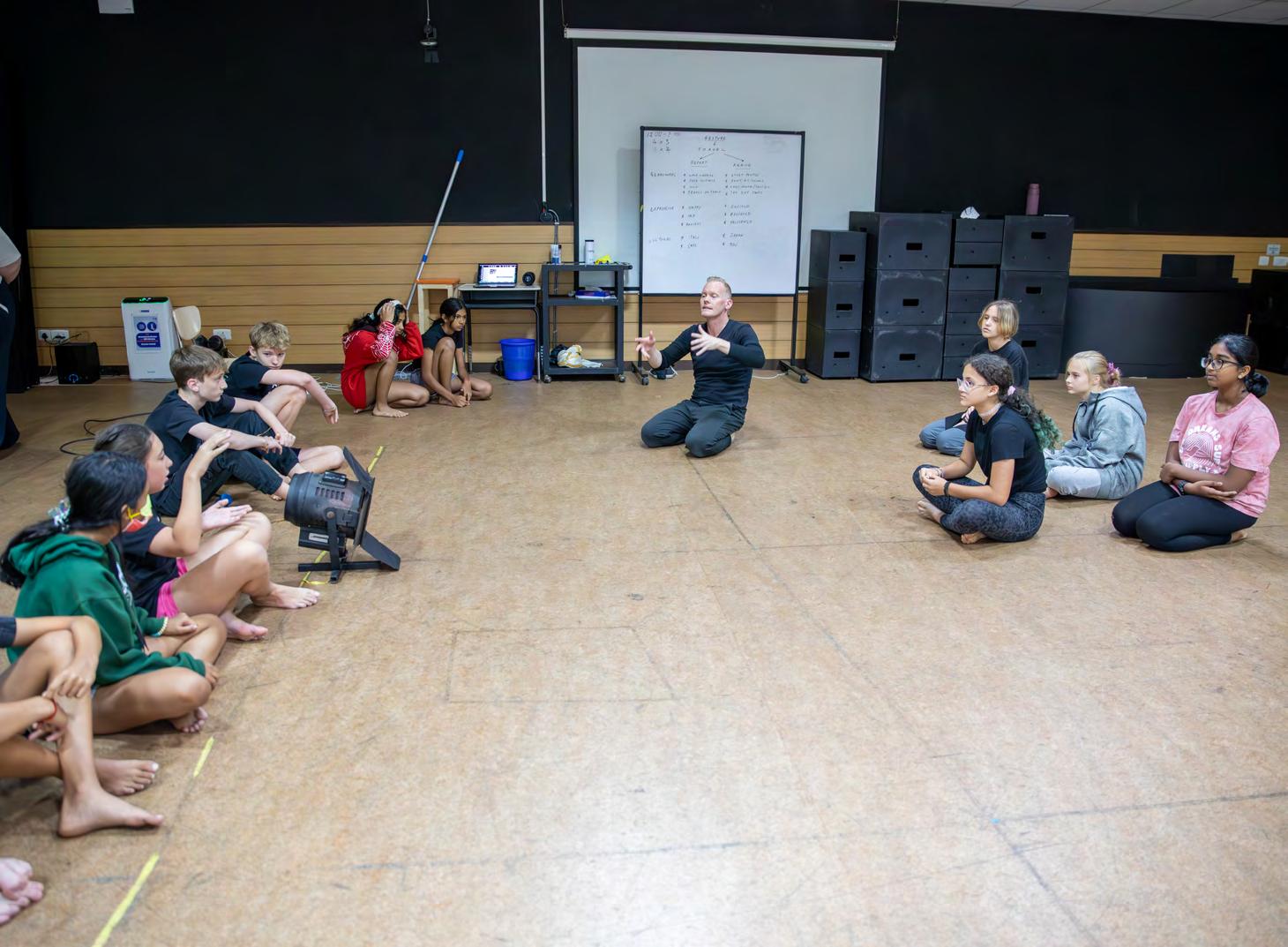

VISUAL ARTS
AISC K-12 Disciplinary Transfer Goals for Visual Arts
Students will be able to independently use their learning to…
• Create art as a form of personal expression;
• Explore, investigate and respond to art with an inquiry approach;
• Think creatively and beyond convention, designing in multiple art forms;
• Use their artistic competence and literacy to be actively involved in the arts; and
• Collaborate and inspire others to be creative.
The AISC Visual Arts Department aims to develop students in contemporary interdisciplinary art and design practices. Students learn investigation methods, creative problem-solving, concept development, materials, tools, and experimental techniques in the areas of Surface (2D), Space/Objects (3D), and Digital New Media (4D).
The Middle School Visual Arts program teaches with an inquiry-based approach that guides choice-based learning. It is important that students have the opportunity to make decisions and choices that support the learning objectives and meet the National Core Arts Standards (NCAS). The importance of integrating new and innovative technologies, while weaving in the traditional methods, encourages students to challenge themselves, take risks, and experiment with various media and ideas. This empowers students so they can make their unique contribution to a diverse and dynamic world by giving them an opportunity to express their ideas through their artwork.
MS Art 6: Foundations
Middle School Visual Arts Electives
MS Studio Art 7/8
MS Studio Art 8
Media Arts: Photography and Videography
New Media In ArtAI/VR/XR
None Year long 6
None Year long 7 and 8
MS Art 6 or MS Studio Art 7/8 Year long 8
None Semester 6-8
None
MS Art 6: Foundations
Semester 7 and 8
The MS Art 6 course is an inspiring opportunity for students to explore the world of visual arts through their identity. With hands-on studio experiences, students develop their observation and visualization skills, gaining a deeper appreciation for the diverse range of mediums available to artists. By studying traditional techniques and exploring the connections between past and present artistic practices, students gain a well-rounded understanding of different art forms. Throughout the course, students experiment with a variety of media, from drawing and painting to working with clay, utilizing their investigation journals to research and develop their artistic concepts.
MS Studio Art 7/8
MS Studio Art 7/8 deepens students’ engagement with visual literacy and creative expression, building upon the foundation laid in Grade 6. This year emphasizes a closer examination of art history, criticism, and aesthetics, linking them to various forms of media and techniques. Students continue to explore the relevance of art to society, examining different perspectives through projects in digital photography, acrylic painting, and multimedia arts. Their investigation journal becomes a more critical tool for ideation and problemsolving as they delve into more complex concepts.
MS Studio Art 8
MS Studio Art 8 culminates the Middle School visual arts program by preparing students for high-level artistic exploration. This year, students refine their skills across all previously introduced media and explore new techniques like printmaking, with a significant focus on developing a personal style and understanding the interplay between art and societal issues. As part of the course, students will engage in public art projects, including mural painting for the school campus. The program integrates advanced concepts of art history and criticism, encouraging students to engage in thoughtful analysis and discussion. Through their investigation journal, students undertake in-depth research and creative experimentation.
Media Arts: Photography and Videography
Media Arts: Photography and Videography is an introductory course that teaches students the technical and creative aspects of visual storytelling through the lens of a camera. Students will explore photography by using film cameras and developing and processing films in a darkroom studio. They will also learn to use professional equipment and software to capture and edit videos, as well as develop an understanding of composition, lighting, and color theory. Students also explore filmmaking, producing short films and documentaries. By the end of the course, students will be well-equipped to create aesthetically appealing projects in the evolving media landscape.
New Media In Art: AI/VR/XR
New Media in Art is a course that covers Artificial Intelligence (AI), Virtual Reality (VR), Extended Reality (XR) and how they intersect with the world of art. The course consists of modules that cover topics such as the impact of these technologies on artistic expression, hands-on projects, and ethical considerations. By the end of the course, students will have gained skills and knowledge to navigate the evolving landscape of new media in art, fostering their creativity and pushing the boundaries of artistic expression.
INFORMATION AND DESIGN TECHNOLOGY
AISC K-12 Disciplinary Transfer Goals for Information and Design Technology
Students will be able to independently use their learning to…
• Continually evaluate and reevaluate a problem and its potential solutions by prototyping and testing;
• Empathetically inquire and research to better understand and solve real world problems;
• Understand and accept challenges as a part of the learning process and an opportunity for growth; and
• Actively collaborate with a diverse group of peers to ideate, give and receive feedback, share ideas, and advance project development.
The Information and Design Technology Department in the Middle School is dedicated to offering a program that provides opportunities for study and creativity within a context that stimulates and challenges students as they develop the skills necessary for independent and lifelong learning. The courses will be focused on helping students to build their skills and knowledge with the Design Thinking Cycle, problem- solving, coding, digital design, and learning by tinkering and making.
Information and Design Technology Electives
Course
Introduction to Design Technology
Coding and Robotics
Coding and Electronics
Digital Design
CAD: Architecture Design
CAD: 3D Modelling
None Semester 6, 7, and 8
None Semester 7 and 8
None Semester 7 and 8
Introduction to Design Technology Semester 7 and 8
Introduction to Design Technology Semester 7 and 8
Introduction to Design Technology Semester 7 and 8
MS Design Technology Introduction to Design Technology
Introduction
In this introductory course, students will explore the fundamentals of design thinking and the design cycle, essential for all product designers. Through hands-on projects, students will learn to combine creative ideas with practical skills, working with a variety of materials, tools, and techniques. This course is designed to ignite students’ passion for design and technology, building a strong foundation for advanced studies in these fields.
Coding and Robotics
In this course, students will delve into the world of coding and robotics using both computer-based and hands-on resources. Students will use online resources to learn and practice simple coding and programming skills. From this foundation, students will design, build, and code a Lego Mindstorm Ev3 robot. Students will complete a series of escalating challenges with Ev3 Robots, involving coding, sensors, and movement.
Coding and Electronics
In this course, students will explore the fundamentals of electronics and computer science through both hands-on and computer-based activities. They will begin by learning the basic elements of an electronic circuit, including
components such as resistors, LEDs, and sensors. As they progress, students will use an Arduino and a breadboard to design and build more complex circuits that mimic real-world applications. Through coding, they will apply core computer science principles such as variables, loops, and conditional statements to control their circuits, enabling interactive and dynamic functionality.
Digital Design (Prerequisite Introduction to Design Technology)
In this course, students will expand their graphic and product design knowledge and skills using vector based CAD drawings and laser cutting. Through handson projects, students will learn how to turn their creative ideas into digital mock-ups as well as physical products.
CAD: Architecture (Prerequisite Introduction to Design Technology)
In Computer-Aided Design (CAD) Architecture, students will develop the skills to transform their architectural ideas into detailed models using industrystandard CAD software. Through hands-on projects, they will explore core design principles with an emphasis on low-cost, sustainable solutions. The course will challenge students to apply their learning to real-world scenarios, from designing efficient residential spaces to addressing urban planning projects that promote sustainability and innovation.
CAD: 3D Modelling (Prerequisite Introduction to Design Technology)
In CAD 3D Modeling, students will use industry-standard software and the design thinking process to create real-world, client-focused projects. Through hands-on 3D modeling and prototyping, they’ll solve practical design challenges and develop innovative solutions. Each project is grounded in reallife scenarios, emphasizing creativity, iteration, and user-centered design.
ACADEMIC SUPPORT PROGRAMS
ENGLISH AS AN ADDITIONAL LANGUAGE
English as an Additional Language (EAL)
The American International School Chennai is proud to host students from diverse countries, cultures, and language backgrounds. The EAL Department’s primary goal is to support each student’s English language development while acknowledging that students’ home languages and cultures are resources for students to draw upon in order to build proficiency in English. This is done through a variety of ways including translanguaging. We value all students as members of our diverse, multilingual learning community.
EAL Admissions Procedures
In Grades 6, 7, and the first semester of Grade 8, students at all language proficiency levels are admitted to AISC. In the second semester of Grade 8, in order to be prepared for the demanding academic environment of High School, students are required to have an intermediate level of English as measured by the WIDA MODEL language assessment in order to be admitted into the Middle School.
To determine the appropriate level of support for students in the EAL Program, the school will consider a range of criteria during the Admissions process. The following criteria are included:
• The application;
• School records (transcripts and/or report cards); and
• The WIDA MODEL English language proficiency assessment scores. (This assessment is generally administered at AISC or online through Zoom.)
After the WIDA scores, application, and records have been considered, a recommendation will be made for the level of EAL support each student will benefit from. Students may be enrolled in the English for Academic Purposes (EAP) course, or may require only co-teaching support. A student’s level of EAL support may change yearly.
ENGLISH FOR ACADEMIC PURPOSES
Aligned to the WIDA Standards, the English for Academic Purposes (EAP) program is designed to support student’s English language development. Students explore a variety of reading and writing genres and text types, learn cognitive academic skills (i.e. strategies for reading comprehension, vocabulary development, critical thinking, and research), and develop their writing, grammar, language usage and vocabulary. Authentic learning activities and assignments will be used to meet student needs. Emphasis is placed on the following:
• Strengthening a student’s foundation around English syntax and structure;
• Developing oral language through engagement discussion strategies;
• Strengthening the comprehension and production of various text types and participation in group discussions; and
• Developing reading and writing skills.
EAP courses in the Middle School are mixed grade level. Courses are intentionally designed to support students at their proficiency levels. Placement is determined based on proficiency level using the AISC EAP program criteria.
EAP A course is designed for beginning and emerging English Language Learners, focusing on the foundational aspects of English communication. Instruction focuses on basic vocabulary acquisition, simple sentence structure, and the development of listening and speaking skills necessary for everyday communication and initial academic contexts. Students engage in highly supportive activities, using visuals, gestures, and tangible objects to understand and begin using English in a meaningful way, in line with the WIDA standards for beginning and developing learners.
EAP B course is tailored for students with a developing understanding of English. This class aims to expand students’ vocabulary, improve their sentence
structure, and enhance reading and writing skills for academic success. Lessons are designed to build confidence in using English in varied academic settings, introducing more complex texts and concepts. The approach encourages interactive and collaborative learning experiences, supporting students’ ongoing language development as outlined by the WIDA standards for developing learners.
EAP C course serves students who are ready to refine their English academic language skills. This class focuses on advanced vocabulary, complex sentence structures, and critical thinking through the analysis of various texts and the production of coherent, detailed writing for academic purposes. Instruction aims to hone students’ ability to use English fluently and accurately in academic situations, in alignment with the WIDA standards for developing and expanding learners, preparing them for academic challenges.
LEARNING SUPPORT SERVICES (LSS)
Learning Support Services (LSS) provide a collaborative, balanced instructional approach that supports, motivates, and inspires all students to become socially, emotionally, and academically successful. If necessary, a collaborative team utilizes a tiered system of support that is developed to meet individual student needs (an Individual Learning Plan or ILP). Determination of the nature and level of support is data-driven and may range from mild (consultation and monitoring) to moderate (direct intervention). The plan is targeted and monitored on an ongoing basis, and specialized instruction may occur in a variety of academic settings with a variety of instructional personnel. Services may include, but are not limited to, targeted instruction in core academic areas, speech and language therapy, counseling, and/or occupational therapy. Families may be asked to seek external assessments to enable us to better meet the individual needs of their students.
LIBRARY
AISC K-12 Disciplinary Transfer Goals for Library
Students will be able to independently use their learning to…
• Use information accurately, creatively, and ethically to share knowledge and to participate collaboratively and productively as a member of a democratic society.
• Access information efficiently and effectively to inquire, think critically, and gain knowledge.
• Evaluate information critically and competently..
COLLABORATION & INQUIRY CENTER
Our library services develop students’ information literacy, provide resources to enrich and support the curriculum, and promote pleasure reading. We believe in the power of collaboration among faculty and students as part of the learning process. We also believe inquiry is essential to discovery and authentic learning. For this reason, we call our library the Collaboration & Inquiry Center. We provide resources that appeal to a variety of interests and reading levels as
well as services that fully support student learning.
EXPERIENTIAL LEARNING
The purpose of experiential learning in the Middle School is to provide opportunities within and beyond the classroom that promote connections to our community, the environment, and local culture, and nurture students’ self-management, self-awareness, and positive relationships through applied learning and reflection. Throughout the curriculum, teachers have designed opportunities for students to further their learning outside through field trips, transdisciplinary projects and individual course projects. These learning experiences enhance curricular experiences through authentic real-world experiences from which students transfer and apply their learning beyond the classroom. These experiences are integral for our program to further live our mission and develop Vision for a Learner (VfL) attributes.
Middle School Experiential Learning Program Aims
Aim 1: Offer opportunities for students to engage in activities and experiences that help build their Vision for a Learner attributes.
Aim 2: Offer opportunities for students to develop metacognitive skills and foster independence.
Aim 3: Support students in building and depending their connections to the community and environment.
Aim 4: Offer authentic opportunities for students to develop and apply their
problem-solving, critical thinking, and design thinking skills.
Aim 5: Offer opportunities for students to experience joy.
WEEK WITHOUT WALLS
As part of the Middle School curriculum, it is important for students to be given the opportunity to experience learning in school as well as outside the of our campus. Week Without Walls (WWW) provides students with a cultural, personal, interpersonal, and environmental experience not available within the regular classroom walls. During this week-long experience out of school with their classmates and teachers, students learn, reflect, and grow as individuals. It is an expectation that all students participate in this program.
The aim of WWW is to:
• Participate in experiences to promote the development and reflect on the attributes in our Vision For a Learner;
• Provide exposure to India in order to nurture a better understanding and appreciation of Indian culture;
• Develop relationships with peers and build community within grade levels;
• Promote personal independence and responsibility and to challenge students physically and mentally; and
• Promote respect for the environment through exposure to diverse
‘SEVAI’: SERVICE LEARNING
The word ‘Sevai’ means service in Tamil. AISC has adopted the word Sevai to represent our overall Service Learning programming. Service Learning links teaching and learning to an increasingly interconnected world. Assessing genuine needs, developing and implementing sustainable solutions, and reflecting on personal growth and the impact of contributions are key steps of the process. The aims of Sevai are to develop:
• Socially aware, empathetic individuals;
• Collaborative problem solvers who actively choose to embrace real-world challenges; and
• Reciprocal relationships of mutual respect between AISC and the greater community.
In our mission-driven school, students are provided the opportunity to use their knowledge and skills in service to others in Chennai by participating in a variety of service experiences through partnerships with local Non-governmental Organizations (NGOs). Sevai promotes exploration for community connection and service by offering students a variety of opportunities to make contributions in the local community. Sevai is scheduled within the regular school day andll students participate.
STEAM
Our STEAM projects follow a Project-Based Learning Model. During a special week each spring, the Middle School adjusts its schedule so students can use the Design Thinking Cycle to develop a prototype that addresses a problem or opportunity identified through their year-long work with their SEVAI partner. Throughout this week, students apply principles of science, technology, engineering, art, and math. They engage in sustained inquiry in a real-world context by researching, planning, collecting data, designing a product, and drawing conclusions about the chosen problem.







